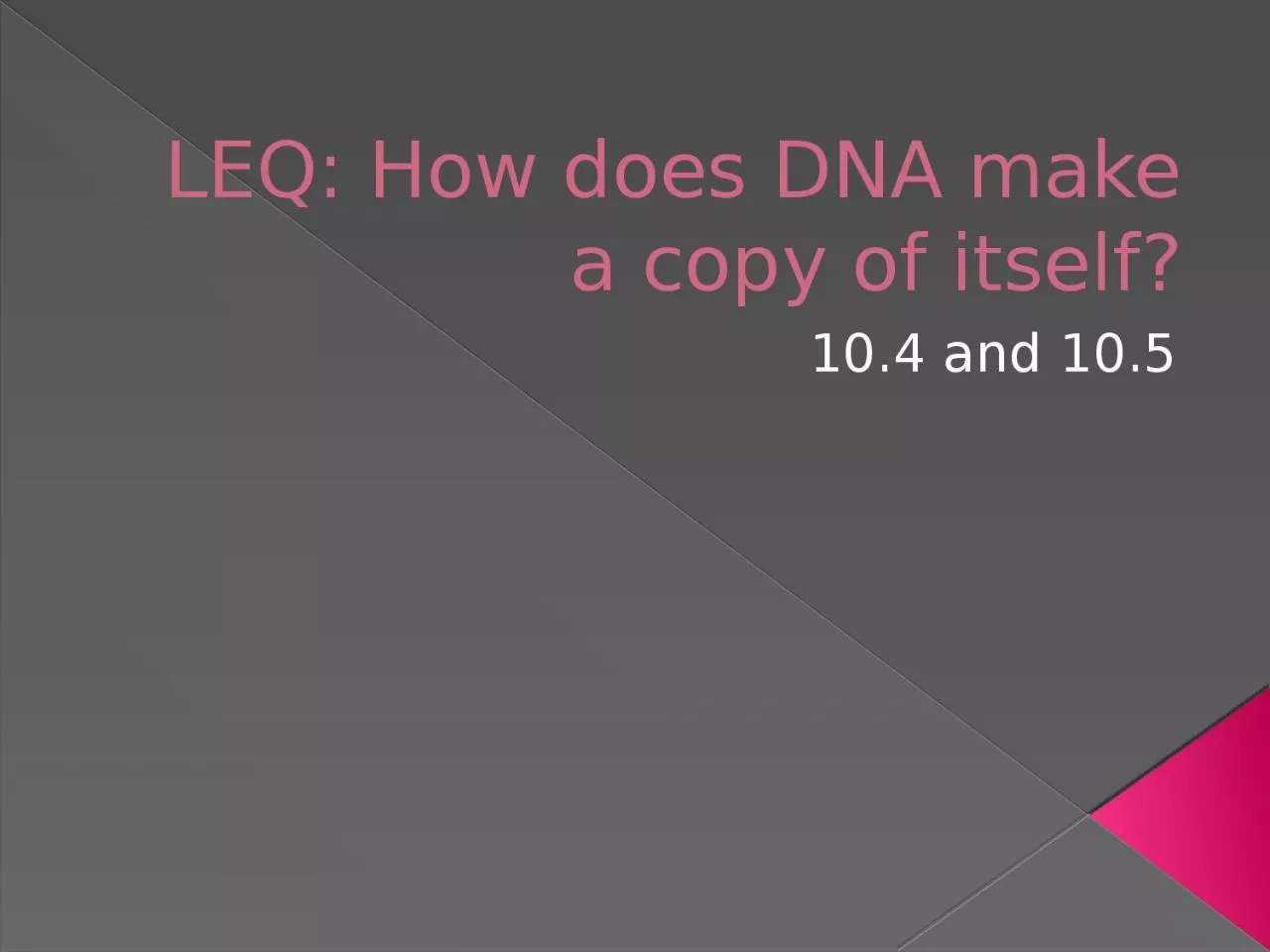

104 and 105 DNA Replication DNA replication DNA making DNA Why must DNA replicate So that when a cell divides each new cell gets a copy of the DNA When does DNA replication take place During the S phase of ID: 1045576
Download Presentation The PPT/PDF document "LEQ: How does DNA make a copy of itself?" is the property of its rightful owner. Permission is granted to download and print the materials on this web site for personal, non-commercial use only, and to display it on your personal computer provided you do not modify the materials and that you retain all copyright notices contained in the materials. By downloading content from our website, you accept the terms of this agreement.
1. LEQ: How does DNA make a copy of itself?10.4 and 10.5
2. DNA Replication?DNA replication: DNA making DNAWhy must DNA replicate?So that when a cell divides, each new cell gets a copy of the DNAWhen does DNA replication take place?During the S phase of interphaseWhen chromosomes go from individual chromosomes to double chromosomes
3. Semi-conservative ReplicationDNA replication where the replicated DNA consists of one old strand and one newly made strand
4. DNA ReplicationOrigin of replicationSites where replication of DNA beginReplication fork/bubbles Openings in DNA where replication takes place
5. DNA Replication
6. DNA ReplicationOccurs in the Nucleus1. Helicase binds to the origin of replication to unwind and unzip DNA; Breaking what bond?Hydrogen Bonds – helicase breaks hydrogen bonds2. DNA polymerase brings in complementary nucleotides attaching them in a 5’ to 3’ direction (phosphate of new incoming nucleotide attaches to the 3’ last nucleotide in the strand
7. DNA Replication3. Ligase – joins sugars and phosphates of newly formed strands of DNA4. DNA polymerase – proofreads DNA, checking of spelling errorsReplication ends with 2 identical molecules of DNA; each with 1 old strand and 1 new stand
8. DNA Replication
9. DNA ReplicationDirection of Replication5’ to 3’ – DNA polymerase needs to have an open 3’ carbon on deoxyribose so that it can add a new nucleotideLeading vs LaggingLeading strand is “continuously” replicated into the the replication fork runs 5’ to 3’Lagging strand is “discountinuosly” replicated; out of the replication fork runs 3’ to 5’
10. DNA ReplicationOkazaki Fragments - short stretches of nucleotides formed on the lagging strand of DNAWhy do we need Okazaki Fragments?They are needed to get replication going in the correct direction on the lagging strand
11. http://sites.fas.harvard.edu/~biotext/animations/replication1.htmlDNA replication InteractiveYou should be aware of the function of Helicase, DNA polymerases, and Ligase